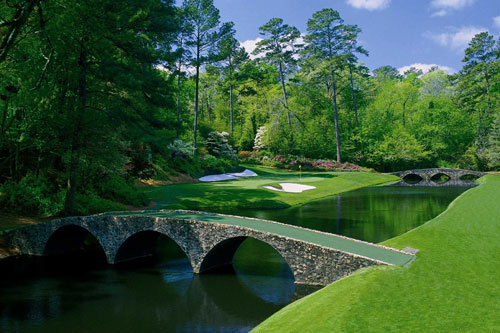 As we reach mid-term in the professional golf season, only one fact can be known for sure: Tiger Woods will finish the year with 14 majors to his credit.
As we reach mid-term in the professional golf season, only one fact can be known for sure: Tiger Woods will finish the year with 14 majors to his credit.
Trevor Immelman was a most deserving winner of the Masters, a championship he led from start to finish. However, the Masters Committee needs to look at the fact that the last day's play lacked any real excitement and that the chief reason for this is overzealous course doctoring over the past years. Lengthened and narrowed, the back nine no longer yields birdies that permit a last-day charge.
The US Open at Torrey Pines was something special and more so as there were worries about the course's suitability—being a 1950s public-access venue that is no longer considered one of America's top golfing destinations.
It became clear, late on Sunday afternoon, that the winner would be either Rocco Mediate in the penultimate group, or Westwood or the hobbling Woods in the final pairing. Westwood played well throughout; a couple of missed putts at crucial stages proving to be his downfall. Woods’s final regulation hole brilliance, Mediate’s tenacity and the enthralling playoff that ensued will live long in the memory. Nobody has stood up to Woods like Mediate since Bob May at the 2000 US PGA, but it still wasn’t enough to end the world number one’s remarkable record of converting every 54-hole lead in a major into victory.
With no Tiger on the starter’s sheet, the world's top golfers keenly await the Open at Royal Birkdale, and the US PGA at Oakland Hills, their chances augmented considerably by his absence. But which is the best major of the four?
The term "the majors" is an American invention, as is "the grand slam" (a term borrowed from bridge). In the early decades of the last century, the US PGA was played close enough to The Open to make it physically impossible for American professionals to compete in both. Back then, the Western Open—now an unremarkable Tour stop—was considered a major. Even when the dates were moved, US professionals and amateurs faced a lengthy and expensive sea voyage across the Atlantic to play scratchy courses in indeterminate weather, and stay in poor accommodation with suspect plumbing. The Open's resurrection is owed first to Ben Hogan at Carnoustie in 1953 and then Arnold Palmer who came, played and won, emphasizing the importance of the oldest Open and cajoling others to join him.
So which is the greatest of them all? Most professionals place the Masters first or second. The invitation alone is accepted as being the rite of passage for those at the very top end of the game. The Augusta National Club has the abiding advantage in hosting the tournament on the same course very year. Audiences grow up watching it on television with little prospect of visiting the place, making it a near unattainable nirvana. The abiding allure is the course, a late work of the great architect Alistair Mackenzie. However the club's changes have reduced the fun and meddled with Mackenzie and Bobby Jones's notion that a great course should be generous from the tee and negotiable by different types of golfer.
Each major is hosted by a different organization. The US PGA represents American professional golfers and this is meant to be their tournament. Except it isn't. Spaces are set aside for club pros but the world's top 100 touring pros inevitably get invited, out of proxy not charter. As more and more US Tour events are won by "alien nationals", the US PGA simply could not take the risk of not inviting the best in the world game.
The US PGA is termed "glory's last shot" by the US media but its grip on the imagination slips every second year when the Ryder Cup takes place. The advent of the Tour Championship and the money-grab of the FedEx Cup—which is an initiative of the PGA Tour, long a separate organization from the PGA of America—have further lessened the championship’s standing.
While The Masters grips the imagination, the stiff and defensive elitism of the host club fails to inspire. The domestic constituency of the US PGA will become gradually less relevant as golf's allure spreads worldwide. The unalienable advantages of the two Opens is that they are open to all entrants, subject to desire and, for amateurs, handicap.
The best majors are therefore the two Opens. The Open Championship reaches back into the 19th century, is played on historic grounds and delivers vagaries of weather and bounce that are elemental factors in the game. The US Open's appeal is now enhanced by the decision to grade the rough. This simple mater of greens keeping delivered the magnificent competition at Torrey Pines and will doubtless be a lasting development.
Click here to see the published article.











